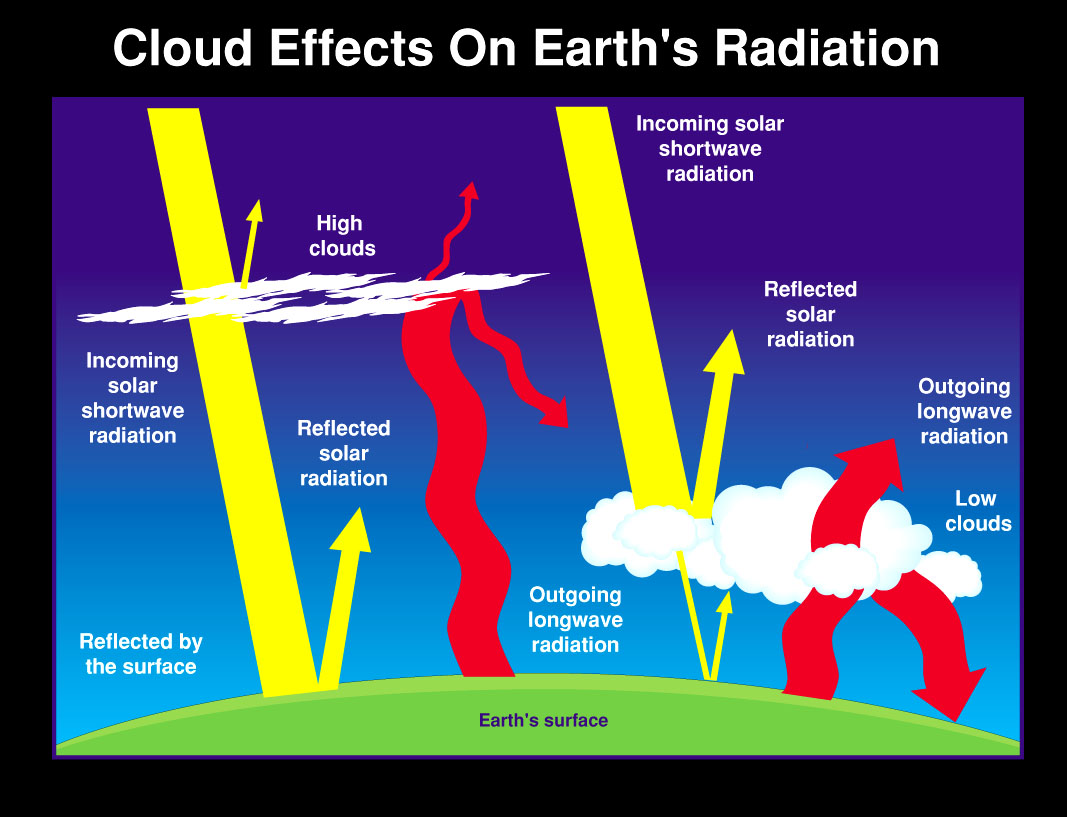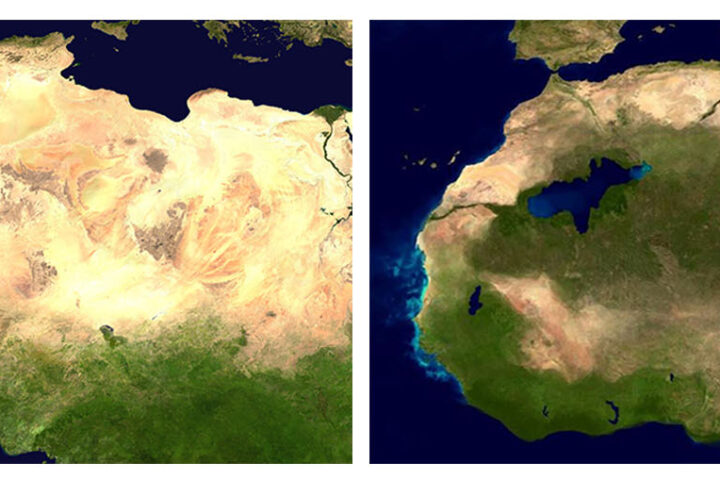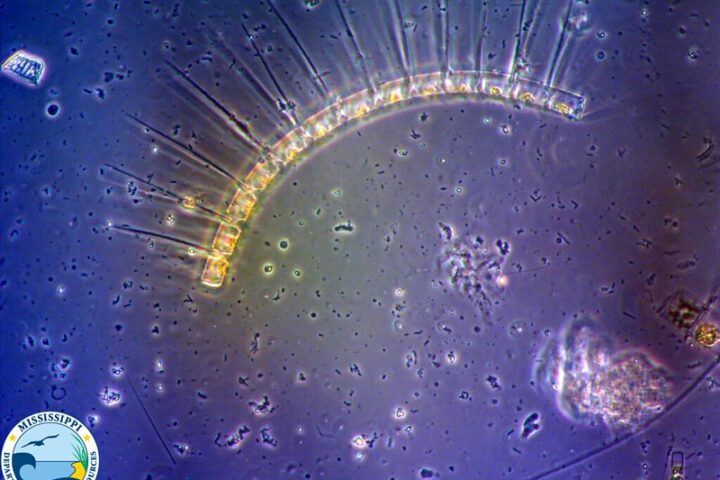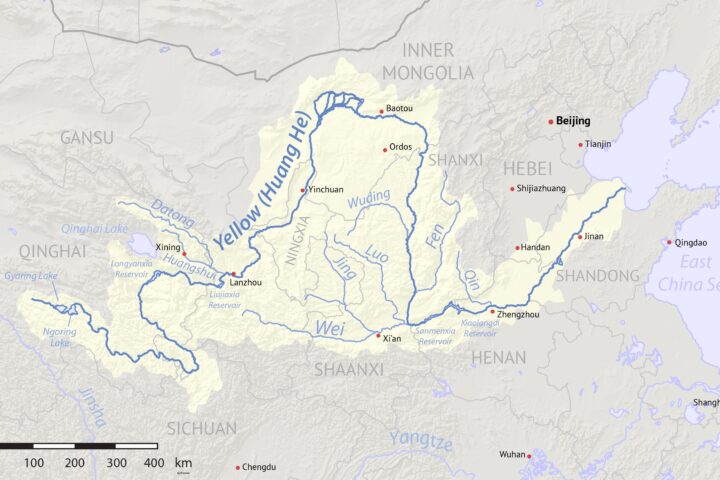Source: Wikimedia_By CERES Instrument Team-clouds-chameleons-of-climate-change
The climate system of Earth is very intricate, with various elements at play. Of these, one of the most critical and recent is clouds. Basically, people think of clouds as bringers of rain or blockers of sun; however, they do much more subtle work in maintaining the temperature of our planet. This can be summed up by the albedo effect.
Albedo is a measure of the surface’s reflectivity, which means it measures the fraction of sunlight that gets reflected into space. High albedo values specify very reflective features—snow and ice are very shiny and bounce off lots of sunlight. The dark surfaces of forests and oceans absorb a lot more. Finally, clouds are complicated, having both high and low albedo at times, because they have large variations in heights, thicknesses, and compositions.
Clouds are composed of water droplets or ice crystals suspended in the atmosphere. Their impact on the temperature of Earth depends on factors such as altitude, thickness, and composition. Cirrus clouds are high altitude, thin, and made up mostly of ice crystals; they are usually wispy and transparent. They let most of the sun’s rays pass through to Earth but act, on the other hand, like a blanket in holding the heat trying to leave, thus contributing to warming. Low altitude, thick stratus clouds on the other hand are composed of water droplets and packed densely around, thus reflecting considerable sunlight back into space and cooling the planet. They also, however, trap heat near the surface, leading to warming.
Cloud formation is a complex process dependent upon temperature, humidity, and air pressure. Climate change may alter these factors and so modify the patterns of cloud formation. For instance, if temperatures are rising, then atmospheric water vapor may also be on the rise; hence, more clouds. The net effect on temperature remains unpredictable because the type of cloud formed depends on other factors. Clouds play a central role in the hydrological cycle, modulating precipitation patterns. The extent of cloud cover may alter the distribution of rainfall, hence affecting agriculture, water resources, and ecosystems.
An adequate treatment of clouds still represents one of the most difficult tasks in climate modeling. Advances have been made, and, actually, understanding in detail the processes involved in the formation of clouds and their interactions with other parts of the climate system has remained an elusive goal to date. Further improvements in the understanding of clouds can, by continued improvement, better inform climate projections and lead to actionable strategies for climate change mitigation.
The relationship of clouds to climate is interactive. Feedback loops may reinforce or dampen climate change depending upon the actions of clouds. A warming Earth may produce more water evaporation, therefore more clouds, which may go on to further trap more heat in case of thin cirrus clouds—positive feedback. On the other hand, enhanced cloud cover might be thick stratus clouds that would reflect more of the sun’s radiation, thereby cooling the Earth—negative feedback.
Cloud research is a continuous process of further study as they form one of the most crucial regulators for how our climate is going to end up. Scientists must sift through reams of observational data, laboratory experiments, and state-of-the-art computer models to uncover cloud intricacies. A better understanding of clouds can enhance our ability to predict future climate change and strategies for its adaptation and mitigation.
Clouds are not merely passive observers of climate but are active participants in the determination of temperature, precipitation, and other climate variables. This duality—cooling and warming the planet—is what complicates the inner workings of climate modeling and prediction. Their role will only continue to grow as the climate continues to change. That’s why investing in cloud research is critical to meet challenges ahead.
Clouds and Climate Sensitivity
Such intricate dance between clouds and climate transcends the simple role that clouds play in reflecting or absorbing sunlight. A critical part of this relationship concerns their impacts on climate sensitivity. Climate sensitivity is a measure of how much the Earth’s temperature will change in response to a doubling of carbon dioxide in the atmosphere. Clouds, through complicated interactions with radiation, water vapor, and atmospheric circulation, become one of the major controllers of this value.
High-altitude, thin cirrus clouds enhance global warming while involved in the amplification of climate change. These kinds of clouds capture part of the outgoing longwave radiation; hence, they contribute to the greenhouse effect. As the Earth warms, increasing amounts of water vapor are injected into the atmosphere, which may lead to increasing cirrus clouds. This means that this positive feedback can amplify warming and raise climate sensitivity.
The other way around, low-level, thick stratus clouds cool the earth by reflecting sunlight. Their contribution to climate sensitivity, however, remains obscure. They can compensate for a bit of warming, but generally reduce incoming solar radiation, which can further modulate atmospheric circulation and precipitation. These indirect effects confuse the analysis of their net effect on climate sensitivity.
Clouds and Extreme Weather Events
Besides their role in climate sensitivity, clouds are also inexorably linked to extreme weather events. A changing climate increases the frequency and severity of extreme events, and climate change modulates these extremes through clouds. For example, warmer temperatures provide for more evaporation, and thus make more water vapor available for cloud formation. This enhances the energy available for storms to form, potentially leading to more intense hurricanes, thunderstorms, and heavy precipitation events.
Moreover, clouds could also impact the pattern of extreme events. Clouds and circulation changes can induce changes in storm tracks, and therefore regions prone to drought, floods, and heat waves are affected. For instance, a change in cloud cover over land is able to raise surface temperature and increase the frequency of heatwaves.
Cloud Microphysics and Climate
The focus of scientists in cloud microphysics is to know better how clouds work within the climate system. Cloud droplets and ice crystals falling in the clouds have an effect on reflectivity, precipitation, and, hence, lifetime of clouds, having impacts on the climate system. Aerosols, minute particles that exist in the atmosphere, sometimes act as cloud condensation nuclei and often alter the size of cloud droplets, increasing cloud reflectivity.
Cloud microphysics research is critical in this respect for developing models of climate. By developing more sophisticated representations of cloud processes, researchers will be better able to simulate the complex interactions between clouds and the climate system with much greater accuracy. This knowledge will be very instrumental in making accurate predictions for future climate change and its impacts.
Challenge of Cloud Observations
Although it remains quite a challenge to observe clouds despite their critical importance, satellites deliver invaluable data concerning cloud cover and properties. However, it remains quite an uphill task to capture in detail the information on cloud microphysics from space. Ground-based observations from weather balloons and radars offer more detailed measurements but have limited spatial coverage.
To overcome these deficiencies, new observation technologies are being developed by scientists, including lidar and better satellite instrumentation. A new generation of observational techniques is providing improved information on cloud properties and hence makes better representations of cloud processes and their interactions with climate possible.
Clouds and Regional Climate
The impact of clouds on the climate is not homogeneous in every part of the world. Regional differences in climate, geography, and atmospheric circulation are such that it results in differences in cloud properties and the effects they have on local weather and climate. For instance, clouds over the Arctic are important in the regional climate of the Arctic. Because the melting of the sea ice gives way to a much darker ocean, the formation patterns of the clouds might change and so modulate the pace of warming in the Arctic.
Understanding regional variations in cloud properties and their action on climate processes is relevant to the formulation of some effective adaptation and mitigation strategies. The analysis of the influence of clouds on regional climate places scientists better to provide appropriate information to other levels of decision-makers and local communities.
Conclusion
Clouds are one of the most complex and dynamic elements of the Earth’s climate system, and their role goes far beyond the reflection of sunlight into climate sensitivity, extremes of weather, cloud microphysics, and regional climate. At the same time, how much of a difference the role of clouds makes in the simulations of future climate conditions under an ever-changing climate can help shape strategies for mitigation and adaptation.
Further investment in cloud research—into new observational techniques and better climate modeling—will be necessary to unlock the secrets of these mysterious atmospheric phenomena. Deepening our understanding of clouds will really enhance our capacity to protect our planet and its inhabitants from the challenges presented by climate change.
Sources:
- https://en.wikipedia.org/wiki/Cloud_feedback#:~:text=On%20their%20own%2C%20clouds%20are,the%20Sun%2C%20which%20causes%20cooling.
- https://cordis.europa.eu/article/id/442741-the-role-that-clouds-play-in-climate-change
- https://www.nature.com/articles/ngeo2398
- https://www.carbonbrief.org/clouds-study-finds-that-low-climate-sensitivity-is-extremely-unlikely/

















